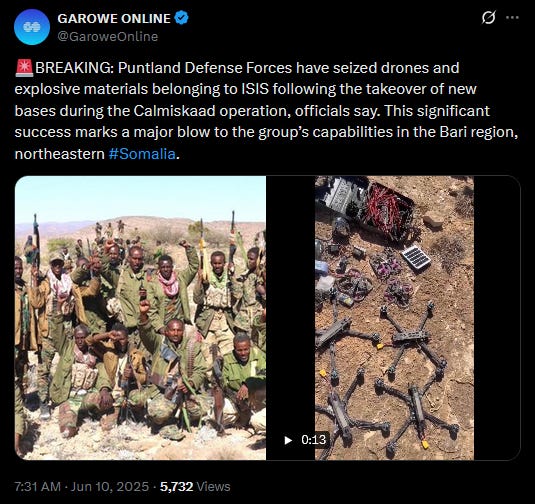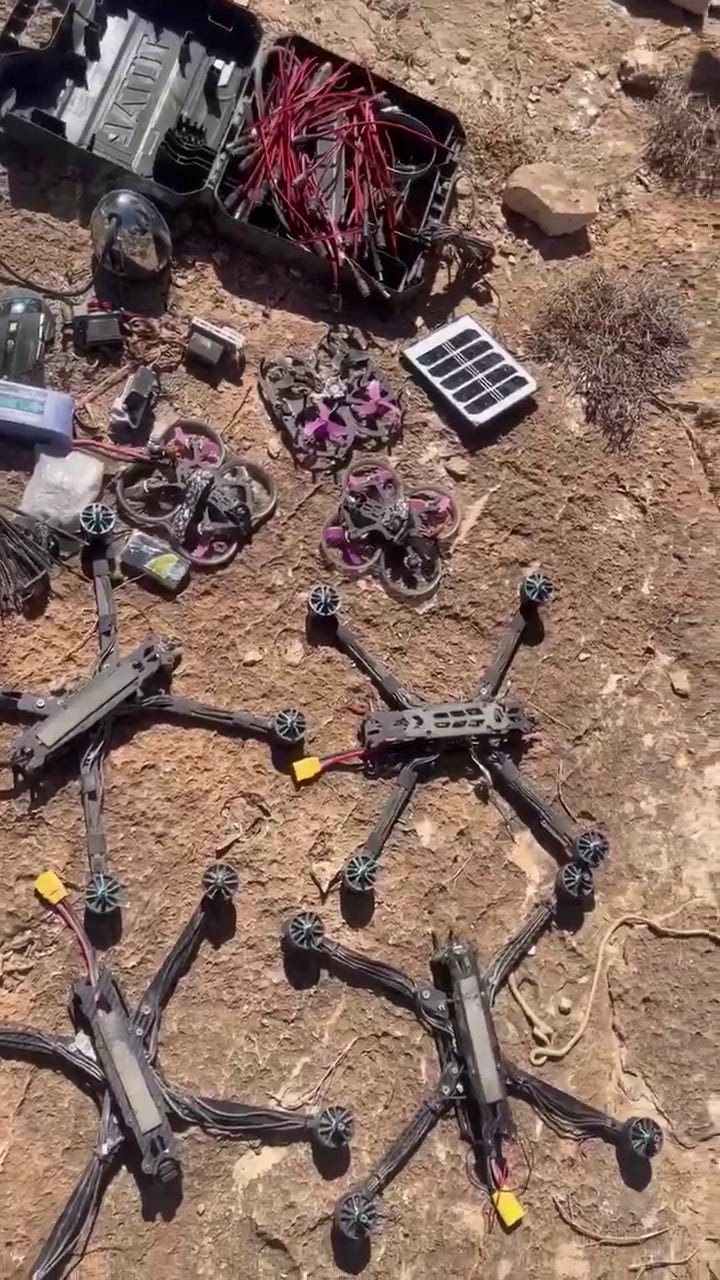Capture Of "FPV" Multirotor Drones In The Hands Of The Islamic State-Somalia Highlights The Worldwide Diffusion Of New COTS Armaments
🇸🇴
In June 2025, security forces in the semi-autonomous Puntland region of Somalia captured so-called first-person video (“FPV”) multirotor drones during combat operations against Islamic State-Somalia fighters. “FPV” multirotor drones are readily accessible, low-cost commercial-off-the-shelf (COTS) uncrewed aircraft that can be adapted for use as low-cost and, as such, plentiful strike munitions. While the employment of “FPV” multirotor drones has received a lot of attention in the context of the Russia-Ukraine War, this category of COTS armament is rapidly diffusing worldwide. The presence of “FPV” multirotor drones in the hands of the Islamic State-Somalia is likely to be a harbinger of a deadly era to come in parts of the world that are affected by active conflict and characterized by the widespread availability of high explosives.
“FPV” multirotor drones, which have their origins in small high-speed multirotor drones used for racing as a recreational activity, and the components for such uncrewed aircraft have become highly commoditized and can be readily purchased over the internet, including through major online marketplaces such as AliExpress, from any number of Chinese vendors and original equipment manufacturers. Some of these Chinese vendors are actively capitalizing on the potential for arming such multirotor drones by offering various attachments and parts through which to either (A) attach a single warhead, such as a PG-7 shaped charge warhead used with the widely available RPG-7 rocket launcher, in a manner that results in the destruction of the otherwise reusable multirotor drone following the detonation of the affixed warhead upon impact or (B) use the multirotor drone to carry and release upon command one or more objects, including grenades and similar, in the manner of a bomber such that the multirotor drone can be reused one or more times.
While “FPV” multirotor drones and the components for such uncrewed aircraft can be readily acquired through AliExpress and elsewhere, it is not possible to order high explosive warheads, and low explosives more generally, through online marketplaces in the same manner. Access to explosives of any kind tends to be highly regulated and is often highly restricted in most countries. As a result, the barriers to accessing explosives in general and high explosives in particular constitute a major bottleneck to employing “FPV” multirotor drones and other COTS technologies as armaments. This is not, however, a practical concern in countries that are active warzones or in countries that are next to active warzones. In Somalia, as in many other countries, armaments of all types, including the likes of the ubiquitous PG-7 warhead and grenades, can be readily acquired at a fairly low cost.
While both “FPV” multirotor drones and suitable high explosive warheads can be readily acquired by combatants in a place like Somalia, skill and experience are required on the part of technicians and operators. While there are any number of relevant resources to be found on YouTube and elsewhere on the internet, the relative difficulty of accessing the requisite skill and experience in a non-industrialized war-torn country like Somalia remains a non-trivial barrier to entry even if ready-to-fly COTS “FPV” multirotor drones and the appropriate arming attachments can be readily ordered online by anyone with a valid address and a credit card. Even so, it is likely only a matter of time until the Islamic State-Somalia and other armed groups, including government and government-aligned forces, begin to employ armed and unarmed “FPV” multirotor drones and similar with increasing regularity.



